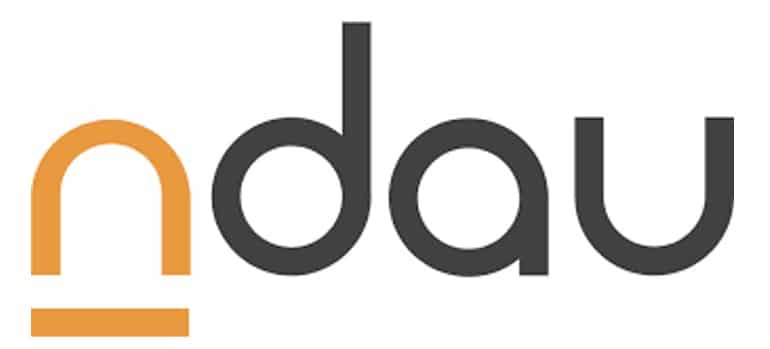Rob Frasca Talks Ndau as an Adaptive Store of Value

The concept of an adaptive store of value is becoming increasingly appealing to the institutional investors joining the blockchain and cryptocurrency space.
This kind of asset now exists as Ndau, a digital currency with built-in monetary policy that captures overall market growth while maintaining stability during market downturns. All without being pegged to any fiat currency.
Demand for Ndau has soared over the past few weeks after its listing on the Bittrex Global exchange and a $1 million investment by Investview. The combined value of its supply is now over $139 million.
We sat down with Robert Frasca, Director at Oneiro, to learn more about what makes this asset so appealing. Frasca is a seasoned technology entrepreneur who has led successful startups acquired by Intuit, Lycos, and Nielsen.
He also serves as Managing Partner at Cosimo X, the ever first evergreen tokenized investment fund.
Hi Rob. It’s great to have you here. First things first, tell us about ndau and how it fits into the general digital currency space.
Rob: When you think about crypto and what’s going on out there, one of the things that you’ve got to look at is where the market is in terms of overall adoption.
Ndau is designed to be an adaptive currency that’s really focused on the long-term store value. And it’s a proof of stake currency.
One of the things I always talk about is that I’m an early dotcom guy. In fact, I actually started the very first financial service on the Internet back in 1993.
We were the first available stock quotes and we sold that company to Intuit. They went on to become the Quicken financial network.
I’ve had the privilege of being in the dotcom space for a long time and grew up as an entrepreneur.
One of the things that I’ve seen over and over again is that, as the market adopts, it’s actually not a first-mover advantage, it’s actually the people that come into the market later and learn from the early adopters that ultimately win.
So what Ndau is trying to do is really learn from the early currencies.
You know, only 10-15% of the world is actually in crypto. So you kind of have to imagine what happens to the world when the remaining 80-85% jump on.
What we’re trying to do is be that long-term store of value focused on later-stage adopters coming into the market.
How do you track the later-stage adopters?
Rob: So when you think about it, it’s not a matter of tracking the later-stage adopters. All it means is that the size of the market is going to grow significantly.
And so, there are more new people coming into Crypto than old people just by a function that only 15 percent of the world is actually in it. The size of the market is going to go up five times.
We also know that most technology adoption grows exponentially, that is what makes this even more exciting.
What Ndau is trying to do is position itself as this long-term store value. With the emerging decentralized financing market over $100 billion and evolving, a reliable collateral, or long term store of value becomes essential.
So what does long-term store value mean? Ultimately, if you think about it, what do you want in a long-term store of value?
Number one, it’s got to be less volatile, right? So it’s got to be a currency that is not as volatile, not free-floating.
Number two, it probably has to have some kind of staking yield. So that’s important because if I’m holding it long-term I want to earn something from it. So it’s got to have a yield.
Three, while it should be completely decentralized, it has to have reliable, decentralized, resilient governance. It can’t be something centralized where it could be attacked.
The other thing it has to have is a robust monetary policy. And what a robust monetary policy means is, is that the amount of currency in the market needs to be able to adapt to overall market conditions.
And, finally, it’s got to have the ability to grow. You know, some people say, “Well, why not use those stablecoins as a long-term store of value?”
And that goes to say, obviously, that if it’s pegged to the dollar, then you’re going to deal with all of that kind of money printing and debasement that we’re seeing with the US dollar.
So what Ndau is trying to do is really solve those problems and ultimately be this long-term store of value. The real use case for this is DeFi.
Decentralized finance really revolves around collateral. Ultimately, as Ndau scales and builds liquidity, it’ll become more and more of a reliable collateral.

So Ndau has a built-in monetary policy. Can you tell us what those policies are and what they mean for the holders?
Rob: A lot of people say “monetary policy” and they just use the word but don’t really go into what it means. But really, what is monetary policy? Monetary policy is how a currency regulates its flow. In other words, how is it issued? How is it burned? How does that respond or not respond to the market?
Ultimately, what the monetary policy has to do is respond to the market. What Ndau does is that it’s spent a lot of time thinking about this adaptive monetary policy. What does that mean? It means that it’s demand-limited or demand-generated monetary policy.
The way that Ndau issues its currency is that it is sold on a bonding curve.
There’s a total of 30 million Ndau that are available to be issued with another 10 million on top of that which are allowed to be created for staking and those kinds of things.
So that 30 million that’s issued is sold on a bonding curve where every thousand Ndau that’s sold on that curve the price ticks up a little bit.
So the first thousand Ndau were sold for a dollar and the second thousand Ndau were sold for a dollar and change, and then the third thousand, and so forth.
There’s three phases in that 30 million. The first 10 million, the price doubles 14 times. After that, that 10 million of Ndau that was sold is issued at a price over 15 thousand dollars.
The second 10 million Ndau are sold on a curve, but it’s a shallower curve, and the price doubles four times. The last 10 million are sold on a curve where the price doubles once. So it’s an S-curve.
Why does this bonding curve have such a unique operation? That’s because, if you think about it, if there’s no price support at that next highest price, nothing will be issued. So imagine that the target price on the curve was $20.00 dollars.
Let’s say the next price on the curve was $20.50. What it says is that unless the market price gets to $20.50 no new currency is issued.
Let’s say the market price was $16.00. What‘s that telling you? What it tells you is that there’s too much supply in the market because the market price is below the bonding curve.
Therefore, no new currency should ever be issued. This bonding curve creates a demand-modulated supply and that’s very important.
Now, this is a very unique property about Ndau. All that capital that comes in through the issuance, that’s seigniorage. Most currencies out there, where does the seigniorage go?
The seigniorage generally goes to the consensus algorithms, or the node operators, or the founders of the project, or the company, or the investors.
Here, all the seigniorage, all that money, that capital that’s used to issue the currency goes into an endowment. That endowment is used to support the currency and support the monetary policy.
Now, this is very important. It’s not pegged to the endowment. It’s not a stablecoin. The endowment is used with one operator and it’s called the floor price.
What the Foundation does with the endowment to support the currency and support the monetary policy is that it issues a floor price.
The floor price is half the endowment value divided by the currency outstanding. It is a contract that basically says if the price fell… let’s say there was a black swan event, the markets collapsed, and it fell all the way down to the floor price.
Think about it, what’s the signal? The signal is that if the price is falling there’s too much supply on the market. So we want a currency that can go in and reduce supply.
How does it reduce supply? If it reaches that floor price the endowment is then used to buy the currency, and when it buys the currency, it burns it. That effectively raises the floor price for everybody that’s still left holding. It’s rewarding long-term holders.
Source: Read Full Article
